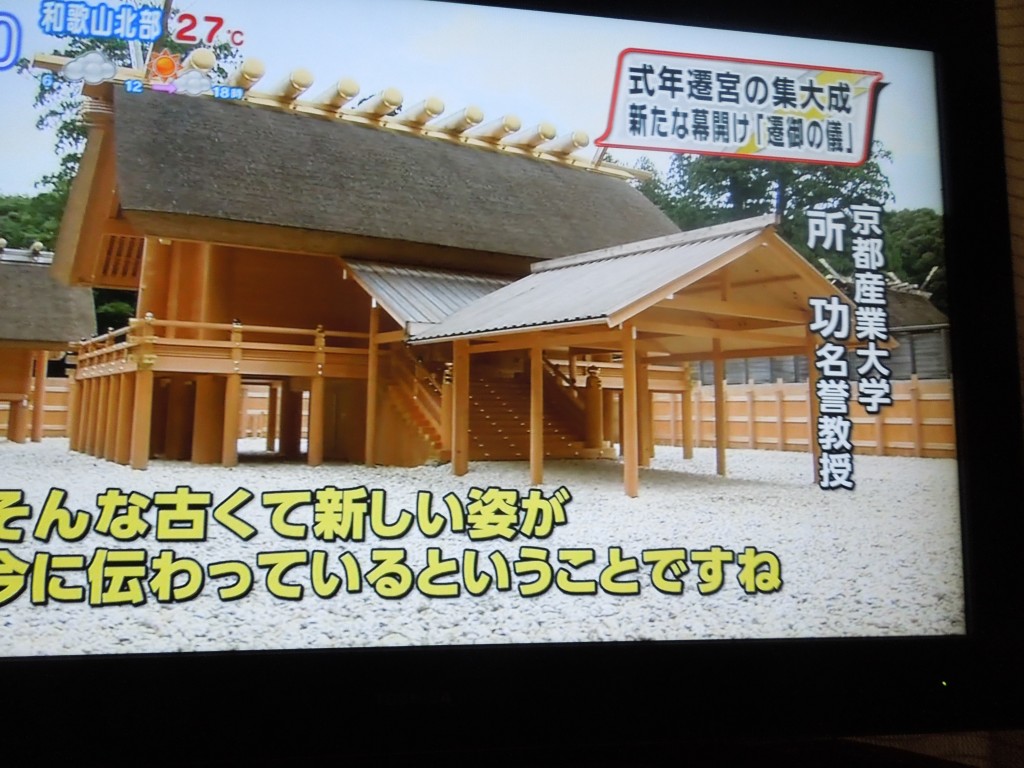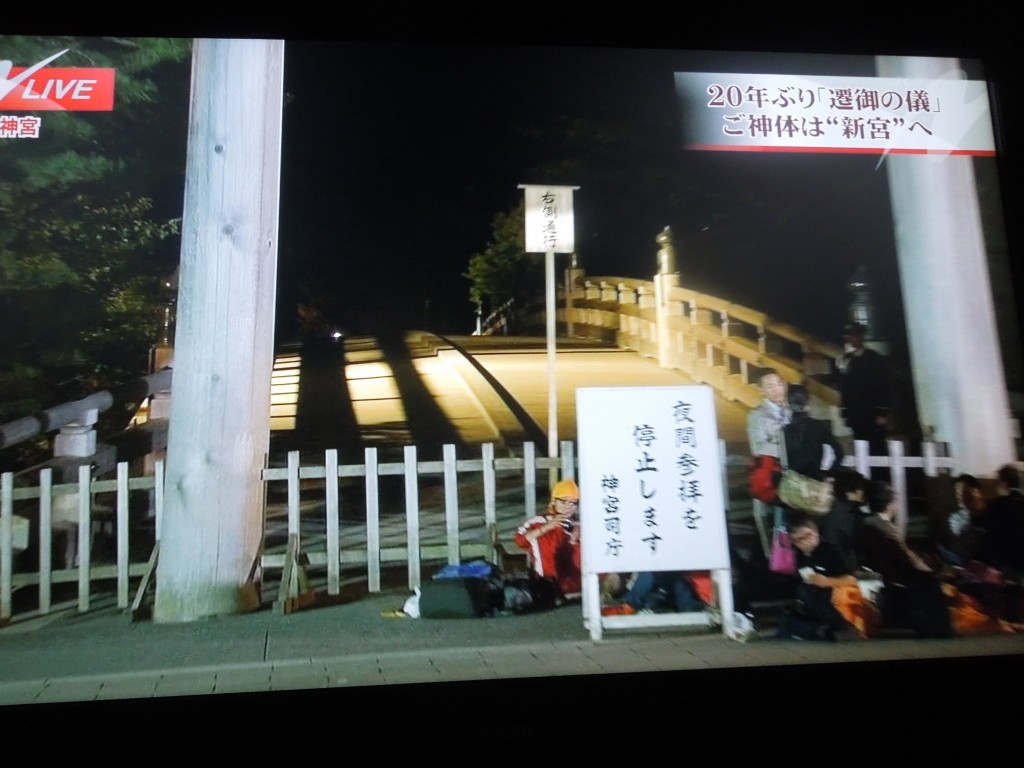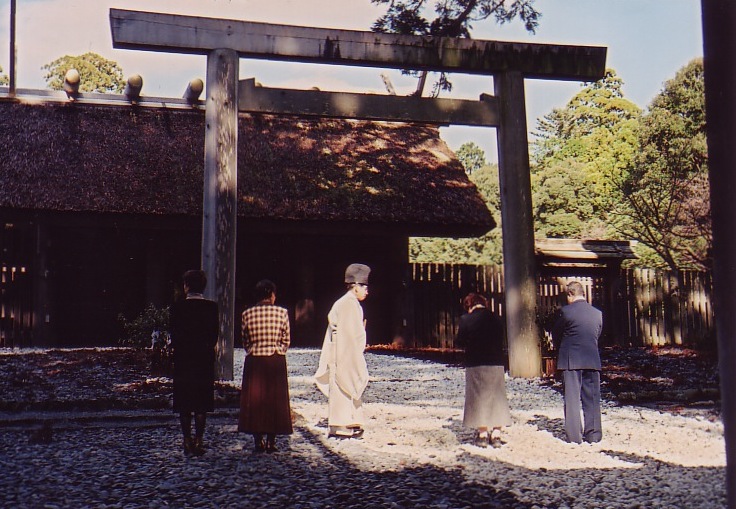There’s an anonymous website by a retired Japanese gentleman called Leisurely Walkings which gives details of his excursions. One of them was a six-day walk from Osaka to Ise, recreating the Okage-mairi of Edo times. He writes that Okage-mairi should take place in the year after Sengu (renewal of the shrines), which means this year (2014) is an opportune occasion to do a pilgrimage to Japan’s holiest site. Happy walking!
(The information below is taken from the website Leisurely Walkings: Tours in Retirement.)
***************************************************************************************

A newly erected shrine building, completed for the shikinen sengu ritual renewal in 2013 and featured on television
“OKAGE-MAIRI” : (1) KOJIEN Dictionary says that “OKAGE-MAIRI” is to visit Ise Grand Shrines in the next year after the SENGU.
The SENGU: Ise Grand Shrines including Naiku, Geku and and their auxiliary sanctuaries have been rebuilt and the symbols of KAMI (Goshintai) they enshrined have been ceremoniously transferred in solemn nocturnal ceremonies from the old sanctuary buildings to newly constructed buildings in their adjoining sanctuaries. It involves the reconstruction of sanctuary buildings as well as the renewal of the sacred apparel and treasures which are carried to the new sanctuary buildings along with the symbol of KAMI on the occasion of Sengyo (![]() :Transfer) ceremony. The SENGU is performed every twenty years (for a firsthand report by Green Shinto supporter, Peter Grilli, click here.)
:Transfer) ceremony. The SENGU is performed every twenty years (for a firsthand report by Green Shinto supporter, Peter Grilli, click here.)

People camp out at the Uji Bridge in order to be the first to cross over after the transfer of Amaterasu's mirror, marking the completion of the 20 year renewal cycle
The people’s “OKAGE-MAIRI”.
In Edo Period (1600-1867) it was very difficult for people to travel freely. But people making pilgrimages to shrines and/or temples for their religious believes were tolerated by government officers of the shogun. Lots of shrines and temples were the objects of pilgrimages. But the most popular pilgrimage was to visit Ise Grand Shrines. It was the grandest occasions in people’s lives and the biggest amusements for them to travel or go on a pilgrimage to Ise Grand Shrines. It’s called “Ise Mairi” or “OKAGE-MAIRI”.
The people living along the highway entertained the people or group of “OKAGE-MAIRI” by giving some rice. money, rice cakes, rice balls, cakes and others to them with glee. It seemed that even if people started on the travel without anything, they did not need to pay fares for ferries, palanquins and/or horses almost and could get foods and drinks without much difficulties on the way.
It was said that some enthusiastic traveling groups attacked wealthy merchants, rushed into magistrate’s offices and made unreasonable demands, and/or forced their ways through barrier stations without any passing licenses sometimes. Among the such situations some residents along the highway enjoyed merrymaking hilariously with the travelers.
People believed that they could travel safely and delightfully to Ise Grand Shrines due to divine protection. And they called the travel to Ise “OKAGE MAIRI (literally Travel due to thanks to God’s divine protection)”.
The popular folk song, ’Ise-Ondo’, which was sung on the way to Ise by travelers, has the following words: ”I would like to go and to see Ise at least once in my lifetime.”

A ritual in the courtyard of the Geku (Outer Shrine).

Leave a Reply